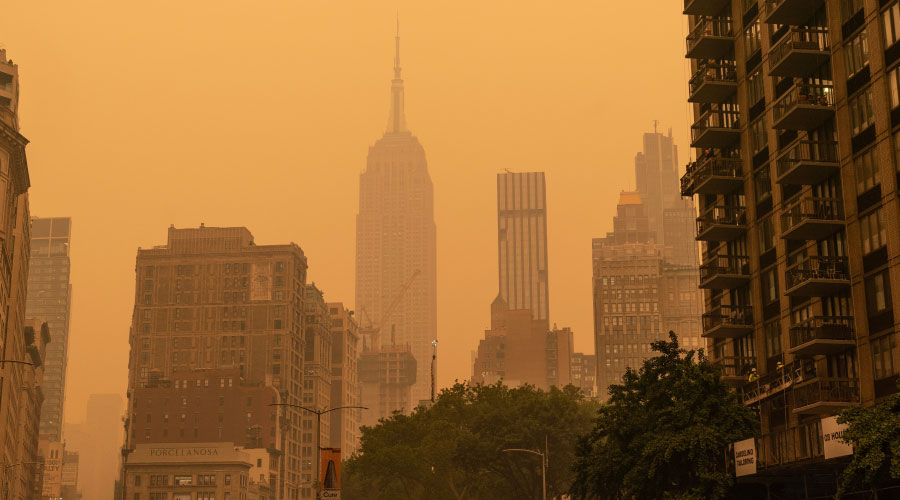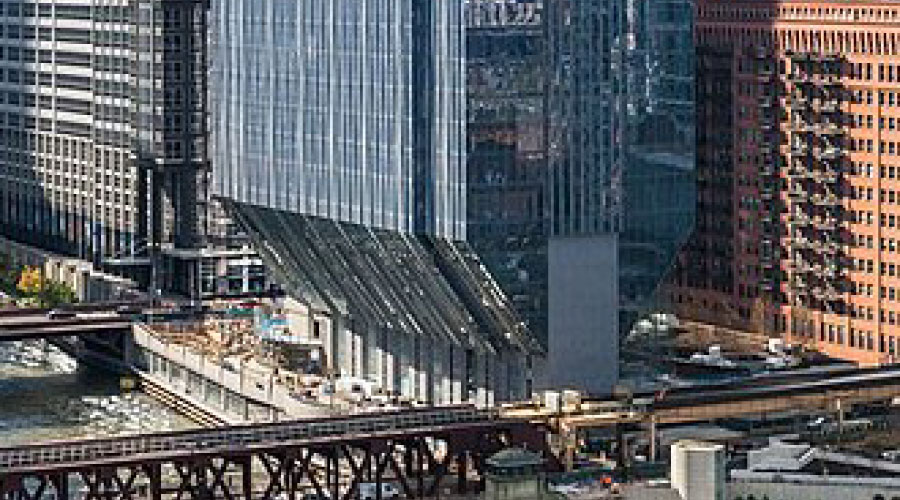
Wildfire Smoke Emphasizes Importance of Resilience for Buildings
Raging Canadian wildfires have drifted south across the border, spiking air quality numbers in major cities across the United States. July 27, 2023
By Dave Lubach, Executive Editor
Raging Canadian wildfires earlier this summer produced images from New York City and other cities across the northern part of the United States that looked more like scenes from an apocalyptic movie.
The smoke from the fires that drifted south across the board spiked air quality numbers in cities like New York, Chicago and Milwaukee and reminded facility managers of the importance of air quality in buildings and the need to maintain healthy levels.
Facilitiesnet recently spoke with John Rozeluk, an associate principle with Buro Happold, about the challenges of keeping building occupants – and the institutional and commercial buildings themselves — safe from the effects of the poor air quality, and the likelihood that these kinds of instances will continue to escalate due to climate change. The interview was edited for length and clarity.
FacilitiesNet: How do wildfires affect the indoor air quality inside buildings?
Rozeluk: The smoke particulates are 2½ micrometers, so they’re quite tiny, and in most circumstances, regular air filtration within buildings isn’t designed to consistently be capturing small particulates. When you have large commercial buildings, typically you are using a MERV 13 or MERV 14 filter, so you are capturing that particulate. But where this really comes into effect are people who may be in older buildings. People may be in buildings that don’t have those systems and the building envelope itself is not always the tightest. They can also get in through other openings in the building. When these particulates get in and don’t have the ability to filter them out, it just kind of adds to health issues that people are having. If we’re designing our buildings for these particulates, which we do in modern construction, we’d be making sure that we can filter all of that out. But the problem lies in that we do have an aging building stock within the country. Retrofits are a big thing now in the industry, particularly as we address embodied carbon and try to keep the structures we have and modernize them.
FacilitiesNet: How do these wildfire episodes affect building design going forward?
Rozeluk: One of the things we’re doing with building design in general is finding ways to build resiliency. We’re seeing changing conditions with climate change right now. Things are getting hotter, storms are getting more severe, so we’re helping our buildings adapt to that. Obviously, you don’t always want to operate your buildings at the highest level of filtration when it’s not necessary because there’s an energy loss trying to move the air across those filters. By having a building that’s resilient and adaptive when outside air conditions are poor, then perhaps you are able to switch out your filters from being higher standard MERV 13 to 14 or 15 or even a HEPA filter. It’s about having that flexibility built in so that you’re still being energy efficient when you don’t need that level of filtration, but you have that redundancy built into the system.
FacilitiesNet: Are you designing buildings for what climate conditions will be like 20 years from now instead of what they are currently?
Rozeluk: Absolutely. That is the resiliency conversation. I think the one thing we witnessed through the pandemic was this need to retrofit our buildings to actually increase the amount of ventilation that we’re bringing in and to increase the level of filtration and reduce the amount of air circulation within a building such that we’re not spreading germs around. In many cases, that’s kind of the diametric opposite to what we want to do in a wildfire situation. We’re going to actually reduce the amount of ventilation coming into the building and recirculate the air more within the space rather than bringing a whole bunch of fresh air in with a high level of filtration, but it’s kind of more of a closed loop rather than constant bringing in outside air. That goes back to making sure that our buildings are adaptable, because we have to be able to determine our best mode of operation based on the circumstances around us.
FacilitiesNet: What lessons can facility managers learn from wildfires and how to handle the effects of them in the future?
Rozeluk: The biggest lesson is to put a plan in place on how they’re going to respond to these situations in the future. The first thing is, how can you pressurize the building, so keeping air from coming into the cracks of the building? Can we have a different set of filters on board that may not be the most beneficial for us when we’re operating day-to-day but in other situations, they’re going to filter out harmful particulates (when needed)? Make sure you have a plan to override controls to reduce the economizer cycle and have air coming into the building to add required ventilation. The biggest thing, the first thing, is plan. The next thing is to educate the facilities team on these plans, and then a final thing is to start thinking about the future and ways that they can build resilience into their facilities.
Dave Lubach is executive editor for the facilities market.
Next
Read next on FacilitiesNet












